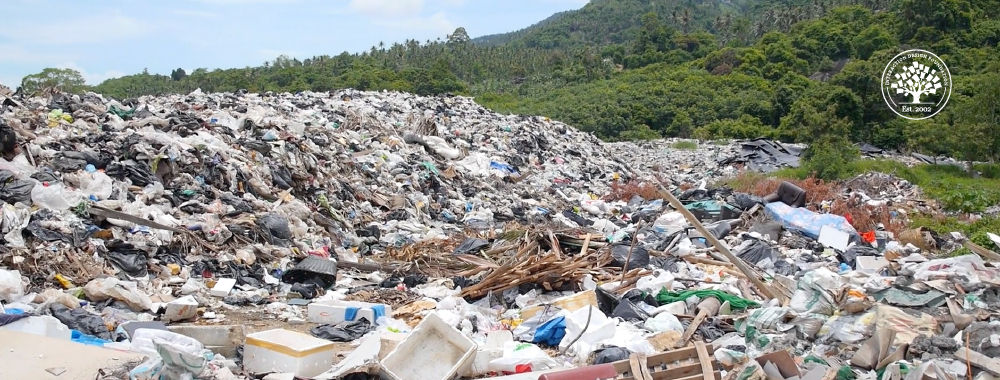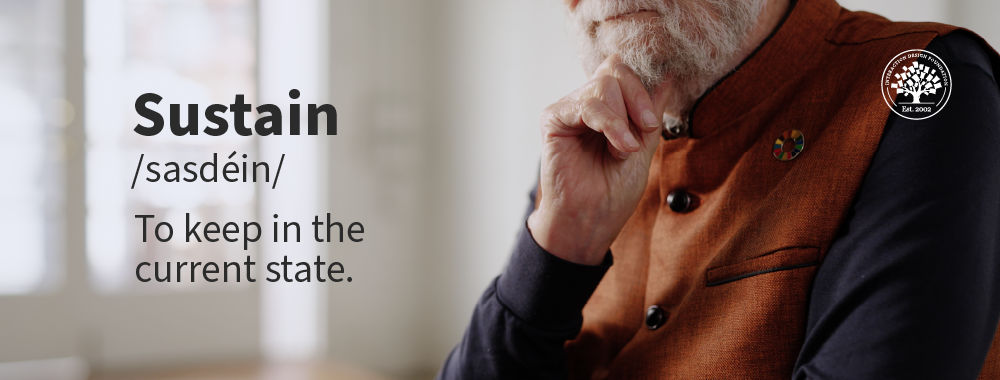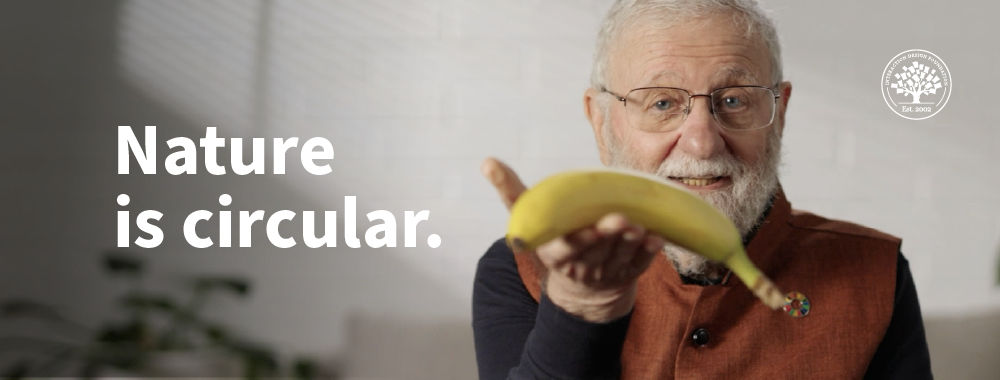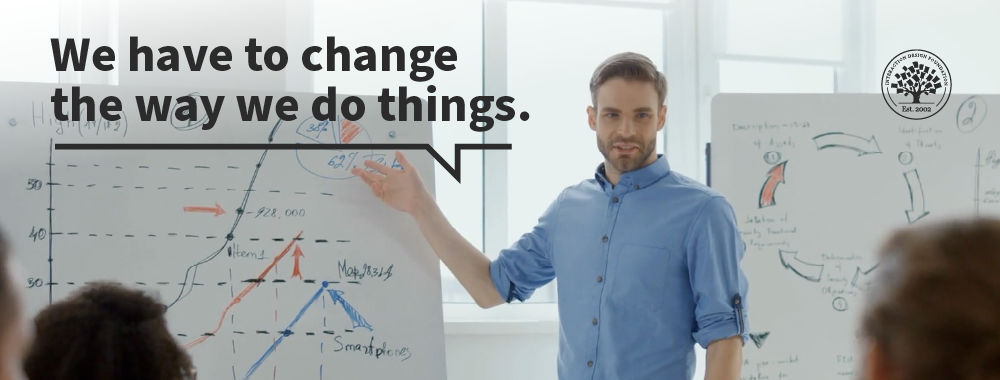Recycling is Not Enough. Let's Design for Reuse

- 442 shares
- 8 mths ago
A circular economy is an economic system that keeps resources in use for as long as possible. Materials are recycled, reused, made renewable or regenerated to reduce waste.
An ideal circular economy should have renewable energy and products that reduce the use of non-renewable materials. As opposed to unusable waste, circular disposal methods generate new resources. For example, compost from food scraps creates new soil to grow crops. If non-renewable resources are used, the products should be kept functional as long as possible through repair, recycling and remanufacturing.
Circular economies are the key to sustainable and resilient societies, driven by principles of sustainable design. These practices can heal, or at least not actively harm, the ecosystem. A circular economy puts less strain on the ecosystem and creates a reliable source of resources for generations.
This model seeks to reduce or eliminate unsustainable practices like deforestation or strip mines. These systems can better avoid shortages and societal collapses when resources run out.
However, the goal in the short term is to create economies that can become more circular, even if a perfectly circular economy isn’t able to be implemented.
Many elements go into the transition to a circular economy, and it won't happen in a single day. Government incentives and other policy changes can help businesses justify more circular business practices, such as taxes on waste or incentives for renewable energy. Governments can pass and maintain right-to-repair laws that allow people a legal means to repair their products, which increases the product's overall lifespan. But what does a circular economy look like?
The circular economy butterfly diagram by the Ellen MacArthur Foundation is an excellent example of how a circular economy should look. This diagram demonstrates how each stage of a product can use recycled or reused materials to manage resources better.
The circular economy butterfly diagram by the Ellen MacArthur Foundation illustrates how we can minimize waste using both renewable and non-renewable materials.
© Ellen MacArthur Foundation, Fair Use
For regenerating resources, like food or wood, disposal makes new material, usually through decomposition. Artificial Intelligence (AI) can optimize these processes by enhancing resource recovery and recycling efficiency. Processes like chemical treatment or composting accelerate this process and make materials useful more quickly.
Finite materials like iron or copper need to be recycled into raw materials and returned to the parts manufacturers to make more products again.
Product manufacturers can refurbish or remake broken products to maintain the use of the product for far longer. Incremental modular design can enable easy upgrades and repairs.
Service providers can coordinate ways to reuse or redistribute working products to those who need them. If products are easy and legal to repair, end users can use the product for as long as possible.
All of these reduce waste and maximize the usage of every scrap of material.
It’s important to remember that lasting change doesn’t happen overnight. Every effort we can make to make it more circular will make an impact. Designers and professionals from all backgrounds must work together to reform our economy in bits and pieces to create a sustainable economy for countless generations.
Like many complex, large-scale solutions, a circular economy requires designers to apply human-centered design principles for user-friendly and effective solutions. Circular designs support a more circular economy with durable, reusable, repairable, and recyclable products.
To create a circular product, designers should consider a product's entire lifecycle, from raw material to distribution, use, disposal, and reuse. This way, designers can create a positive environmental and social impact at every stage.
Designers should consider using organic, renewable materials in physical products. We can also help design means of reusing or recycling material into new products.
Even digital products can help create a circular economy. Designers can push to support older devices and combat forced obsolescence, which causes waste.
Energy-efficient software can reduce energy usage in a variety of digital devices. The apps we choose to design can promote other types of reuse, like online thrift stores, and educate people about recycling. Even intangible products can be greener and help design a better world.
The circular economy requires circular design. The three principles of circular design are:
Eliminate waste and pollution, including toxic substances that harm the soil and water and reduce emissions. Design plays a key role here. Almost every product generates waste, so we need to redesign everything.
Circulate products and materials at their highest value for as long as possible. For example, we can build machines to be long-lasting and easy to take apart and repair with reusable parts. These recyclable materials reduce the need for metal mines, which can harm our ecosystem.
Regenerate natural systems by returning natural resources to the earth. For example, food waste can help regenerate farmlands.
Several companies have leveraged circular design practices to preserve resources and reduce waste. While not circular economies unto themselves, they contribute to a more circular system overall. Here are a few notable examples:
Kalundborg, Denmark, has established an industrial symbiosis network. These companies exchange waste and by-products, which can be valuable resources for other industries. For example, excess steam and hot water from a power plant are used by nearby factories to reduce energy consumption.
Copenhagen, Denmark, has adopted policy changes and infrastructure to promote a circular economy by recycling and reducing waste with organizational innovation and public-private innovation (PPI) partnerships.
Patagonia, a clothing manufacturer, encourages customers to repair and reuse their products with repair services and guides. This approach extends the life cycle of their products and reduces the need for new purchases.
Platforms like Lyft and Uber let people share vehicles for transportation, which reduces the need for cars. This approach reduces the overall demand for automotive manufacturing and parking lots. Airbnb has a similar approach to accommodations, which reduces the need to build hotels.
Interface, a carpet manufacturer, has implemented closed-loop recycling systems. They remove old carpets, separate the fibers, and use them as raw materials for new carpet production. This process reduces material demand and keeps resources in circulation.
These examples highlight different circular economy aspects and demonstrate innovative approaches across various industries and sectors.
Designers and professionals from all backgrounds must work together to reform our economy in bits and pieces. Only then can we have a fair and sustainable economy for countless generations.
For more on circular economies, take our course: Design For a Better World with Don Norman.
For more about sustainable design, take our course: Design for the 21st Century course with Don Norman.
Norman, Donald A. Design for a Better World: Meaningful, Sustainable, Humanity Centered. Cambridge, MA: The MIT Press, 2023.
The circular economy challenges UX designers to create digital products and services that reduce waste and maximize resource use. It shifts focus from linear “make-use-dispose” models to systems that prioritize reuse, repair, and longevity. UX designers can lead by designing intuitive user journeys that promote product repair, recycling, or second-hand use, such as encouraging users to buy refurbished devices or subscribe to sharing platforms.
This model aligns closely with sustainable design principles. For example, modular phone designs by Fairphone let users easily replace parts. Designers shaped that interaction to be user-friendly, empowering consumers to extend product life and reduce e-waste. Interestingly, the global e-waste generation is on track to reach 82 million metric tons by 2030, and UX decisions can directly influence that number.
Come on board the world of smarter, more efficient and ethical design with a circular design mindset.
Linear and circular design approaches differ in how they treat product lifecycles. Linear design follows a “take, make, dispose” model. It often leads UX designers to build short-lived digital products that demand frequent updates, frustrating users and wasting resources. Circular design, by contrast, aims for sustainability—focusing on durability, repairability, and reuse.
In UX, circular design promotes adaptable, long-lasting user experiences. For example, IBM’s Carbon Design System enables teams to reuse interface components, cutting down on repetitive development. Designers use this approach to reduce digital waste and build systems that grow with users over time.
To apply circular principles, UX designers should focus on modularity, longevity, and reuse. Designing with these goals in mind boosts sustainability and user trust. It also helps organizations reduce costs and environmental impact over the product’s life.
UX designers apply circular economy principles to digital products by designing experiences that minimize waste and extend usability. Instead of creating disposable apps or features, designers can build modular, reusable components that adapt to evolving needs—reducing the need for frequent rebuilds.
For instance, design systems like Google’s Material Design support reuse at scale, cutting down development time and digital clutter. Circular design also encourages seamless repair, such as interfaces that guide users through fixing errors or updating outdated tools instead of abandoning them.
Designers can also nudge users toward sustainable choices, such as promoting digital decluttering, favoring low-energy UI designs, or extending product lifecycles through backward-compatible updates. These strategies don’t just reduce environmental impact; they improve user loyalty and satisfaction, too.
Explore how sustainable design can help make a better world.
To include circular thinking in personas and journey maps, highlight sustainable behaviors and long-term interactions. Start by updating—or creating—personas to reflect values around reuse, repair, and environmental impact. Include traits like “values sustainability” or “prefers durable products” to shape relevant user goals.
In journey maps, extend the typical linear flow to cover a product’s full lifecycle—beyond use to reuse, repair, and end-of-life. Add touchpoints like “seeks second-hand options,” “initiates repair,” or “looks for recycling guidance.” These additions help teams spot moments to design for longevity and resource efficiency.
Find out why personas are far more than helpful to designers; they’re vital, as William Hudson: User Experience Strategist and Founder of Syntagm Ltd, explains.
To design for repair, reuse, or end-of-life, build systems that support longevity and responsible disposal. Start by making repair easy—design interfaces that guide users through troubleshooting or link them to repair services. Include feedback loops, like diagnostic tools or help widgets, to encourage fixing instead of replacing.
Prioritize modularity for reuse. Create design systems that support components being repurposed across products. Offer clear instructions for resetting, reconfiguring, or gifting used devices. For example, Fairphone’s modular smartphone design includes UX that teaches users how to swap parts independently.
Design for end-of-life by integrating options to delete personal data thoroughly and reliably, recycle components, or return products. This builds trust and reduces e-waste.
When UX design aligns with circular economy goals, users feel empowered, products last longer, and sustainability becomes a seamless part of the experience—a win-win for all concerned.
Get deeper insights from our article Sustainability Is Not Enough.
Several standout UX examples reflect circular design principles, prioritizing reuse, repair, and sustainability. Fairphone leads by enabling users to replace components like screens or batteries themselves. Its interface offers simple guides for DIY repairs, empowering users and reducing e-waste.
Patagonia’s Worn Wear program offers another model. The digital experience encourages users to trade in used gear and shop refurbished items. UX flows support this circular behavior with easy navigation, clear messaging, and minimal friction.
IKEA's Buy Back & Resell service also integrates circular thinking. The UX design makes it simple for users to return old furniture through a guided online assessment; this journey promotes reuse and effectively extends product life.
Each of these designs builds user trust and loyalty while minimizing environmental impact. They prove circular UX isn’t just nice and ethical—it’s good business, too.
Explore how How Designers Can Help Companies Design for the Circular Economy.
To design for the circular economy, UX designers need a blend of sustainability awareness, systems thinking, and user-centered design expertise. Start by understanding lifecycle impacts: learn how digital and physical products affect the environment over time. This helps in making choices that reduce waste and promote longevity.
Systems thinking is key. Designers must see beyond single interactions to understand how parts of a product ecosystem connect and influence reuse, repair, or recycling. Combine this with strong research skills to uncover user attitudes toward sustainability.
Interaction design, information architecture, and service design all come into play. For example, designing intuitive flows for product returns or repair guides requires clear UX writing and journey mapping. Adding these skills empowers designers to create products that last longer and serve both people and the planet better.
Get closer to humanity-centered design and learn more about how to design for wider impacts.
Systems thinking helps UX designers work in circular ways by revealing how user actions connect within larger, long-term product ecosystems. Rather than focusing only on immediate tasks, designers who think in systems consider full lifecycles—from product creation to repair, reuse, and disposal.
This perspective helps UX designers spot opportunities where design can minimize waste or extend usability. For example, when designing an app for renting gear, systems thinking ensures the UX supports not just booking, but also maintenance, return logistics, and refurbishment.
It helps teams break silos and collaborate across disciplines, too, connecting digital touchpoints with backend operations, supply chains, and customer service. This integrated view leads to more resilient, user-friendly, and sustainable solutions.
Systems thinking turns UX from screen-level design into a force that drives circular impact across entire product journeys.
Get right into systems thinking to find out how to dig deeper into the bigger picture and design better for systems.
Circular design and inclusive UX both aim to create long-lasting value—for people and the planet. Circular design focuses on sustainability, while inclusive design ensures accessibility and fairness. Together, they help UX designers build products that serve diverse users without depleting resources or creating waste.
For example, when a designer makes a digital product easy to repair or repurpose, they support both environmental goals and economic fairness, helping users who can’t afford frequent upgrades. Similarly, designing for device reuse benefits low-income communities and reduces e-waste.
Inclusive circular design also means considering all users in end-of-life flows. Clear instructions for recycling or donating devices must be accessible to people with different abilities, languages, or digital skills so they can confidently embrace and participate in healthy, future-ready design practices.
Investigate inclusive design to learn more about what it involves and how to design to accommodate more users more comfortably.
Human-centered and humanity-centered design both support circular goals by putting people and the planet at the core of design decisions. Human-centered design focuses on individual needs, helping to ensure solutions are usable, accessible, and meaningful. Humanity-centered design expands this scope to consider long-term impact on communities, ecosystems, and future generations.
Together, they push UX designers to think beyond short-term convenience. For instance, a human-centered approach might ensure a product is easy to repair. A humanity-centered lens asks if that product reduces waste, supports ethical supply chains, or helps communities thrive. This broader thinking enables designers to align circular goals—reuse, repair, recycling—with ethical, inclusive practices. Products become not just user-friendly, but life-friendly, community-friendly, and planet-friendly.
Uncover some important insights about how to do human-centered design well in this video with Don Norman: Godfather of User Experience design, author of the legendary book “The Design of Everyday Things”, and co-founder of the Nielsen Norman Group.
Cognitive Science building at UC San Diego. by AndyrooP (CC-BY-SA-4.0)
https://commons.wikimedia.org/wiki/File:Cognitive_Science.jpgNorman, D. A. (2023). Design for a Better World: Meaningful, Sustainable, Humanity Centered. The MIT Press.
In Design for a Better World, Don Norman proposes a shift from traditional human-centered design to a broader "humanity-centered" approach. He argues that design must embrace sustainability and social responsibility to address global challenges like climate change, inequality, and waste. The book blends theory with actionable strategies, urging designers to think systemically and ethically. Norman emphasizes circular economy principles as a foundation for rethinking product lifecycles and services. This work is widely considered essential reading for UX professionals and design leaders looking to integrate ethical and sustainable practices into their processes.
Post, P. (2022). Circular Experience Library. Circular-Experience.org. https://www.circular-experience-library.org/
The Circular Experience Library, developed by UX and service design consultant Peter Post, offers 72 free UX design patterns aimed at enhancing customer experiences within the circular economy. Each pattern includes downloadable assets—such as PDFs, PNGs, Adobe XD files—and video tutorials, facilitating rapid prototyping and ideation. The library addresses various stages of the product lifecycle, from purchase to end-of-life, promoting sustainable practices like product-as-a-service models and digital product passports. Recognized with awards like the German Ecodesign Award 2023, this resource serves as a practical toolkit for designers seeking to integrate circular principles into their workflows.
Fiare. (n.d.). How to design user experience for circular economy platforms? https://fiare.com/articles/how-to-design-user-experience-for-circular-economy-platforms/
This article by Fiare offers a comprehensive guide for UX designers aiming to create digital platforms that support circular economy principles. It emphasizes the importance of transparency, lifecycle visualization, and user engagement in promoting sustainable behaviors. The piece provides actionable strategies, such as incorporating material passports, visualizing product lifecycles, and simplifying sharing and reuse processes. By aligning UX design with circular economy goals, the article serves as a practical resource for designers seeking to facilitate recycling, reuse, and resource efficiency in digital marketplaces.
Remember, the more you learn about design, the more you make yourself valuable.
Improve your UX / UI Design skills and grow your career! Join IxDF now!
You earned your gift with a perfect score! Let us send it to you.
We've emailed your gift to name@email.com.
Improve your UX / UI Design skills and grow your career! Join IxDF now!
Here's the entire UX literature on a Circular Economy by the Interaction Design Foundation, collated in one place:
Take a deep dive into Circular Economy with our course Design for a Better World with Don Norman .
Master complex skills effortlessly with proven best practices and toolkits directly from the world's top design experts. Meet your expert for this course:
Don Norman: Father of User Experience (UX) Design, author of the legendary book “The Design of Everyday Things,” co-founder of the Nielsen Norman Group, and former VP of the Advanced Technology Group of Apple.




We believe in Open Access and the democratization of knowledge. Unfortunately, world-class educational materials such as this page are normally hidden behind paywalls or in expensive textbooks.
If you want this to change, , link to us, or join us to help us democratize design knowledge!
